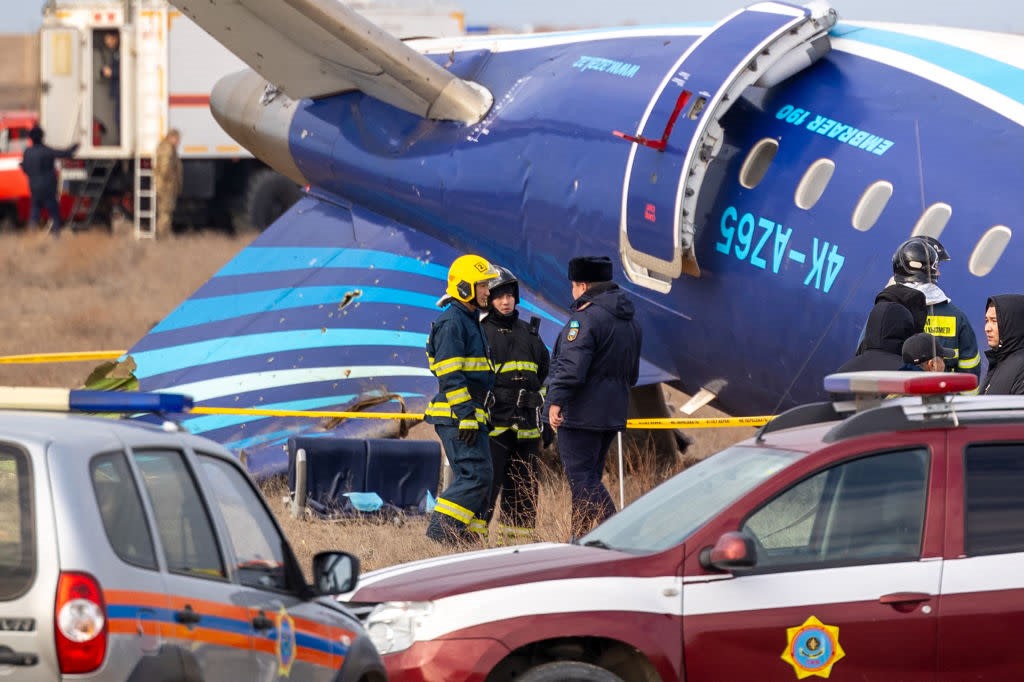Early reports suggest that a Russian anti-aircraft system may have downed the passenger jet that crashed in Kazakhstan, according to the sources of Leaders team. The tragic accident claimed the lives of at least 38 passengers and left many questions unanswered as investigators work to determine the cause of the disaster.
Authorities have recovered a second black box from the wreckage of Azerbaijan Airlines flight J2-8243, which they hope will shed light on the sequence of events leading to the crash near the city of Aktau. The flight, which originated in Baku, Azerbaijan, and was en route to Grozny, Chechnya, deviated from its course before the tragedy unfolded.
Preliminary Findings and Speculations
The US official stated that early indications point to a Russian air-defense system striking the plane, potentially due to mistaken identity. The theory suggests that poorly trained Russian units may have fired negligently amid heightened tensions over Ukraine’s drone activity. This marks the first assessment from the US regarding the incident.
While officials from Azerbaijan, Kazakhstan, and Russia have urged restraint in speculating about the cause of the crash, some experts and observers have questioned the official narratives. Ukrainian authorities and aviation analysts have pointed to possible shrapnel damage visible on the aircraft, indicating that it may have been struck rather than suffering a technical failure or a bird strike, as initially reported.

Timeline and Route of the Flight
As per the sources of Leaders team, flight J2-8243 departed Baku on Wednesday morning and was scheduled to land in Grozny. However, heavy fog in Grozny caused the plane to be rerouted. Approximately 45 minutes before the crash, Kazakhstan’s Minister of Transport reported receiving a signal from Russian air traffic control that the flight was experiencing control system failures.
The plane attempted two landing approaches at Aktau airport before deviating from its course and losing communication with dispatchers. Shortly after, it crashed about 3 kilometers from the airport. Flightradar24 noted that the aircraft was exposed to GPS jamming near Grozny, a factor that could significantly disrupt navigation and communication.
Survivors and Casualties
Of the 67 people on board, 38 lost their lives, including the two pilots and a flight attendant. The remaining 29 passengers, including two children, survived the crash and were pulled from the wreckage. Many of the survivors were transported to hospitals in critical condition, with some requiring intensive care.
The passengers represented multiple nationalities, including citizens of Azerbaijan, Russia, Kazakhstan, and Kyrgyzstan. Repatriation efforts are underway for the deceased, while survivors continue to receive medical treatment in Kazakhstan.
Theories and Investigations
Competing theories about the cause of the crash have emerged. Azerbaijan Airlines initially attributed the incident to a bird strike, while Ukrainian officials and aviation experts have suggested that the plane was likely shot down by Russian military air defenses. Justin Crump, a defense expert, noted that Russian air-defense systems were active near Grozny at the time of the crash and suggested that the incident was likely a tragic error rather than a deliberate act.
Ongoing investigations involve representatives from Kazakhstan, Azerbaijan, Russia, and Brazil, including officials from Embraer, the plane’s manufacturer. Fragments of the aircraft are being collected, and authorities are analyzing flight data and black box recordings.
Awaiting Clarity
As the investigation progresses, officials have emphasized the importance of avoiding premature conclusions. Kazakh authorities have stated that the true cause of the crash will only be determined after thorough analysis by experts. While early indications point to human error and geopolitical tensions, the full picture of what happened to flight J2-8243 remains to be uncovered.
This tragedy highlights the critical need for heightened safety measures and coordination in airspace management, particularly in conflict-affected regions.







